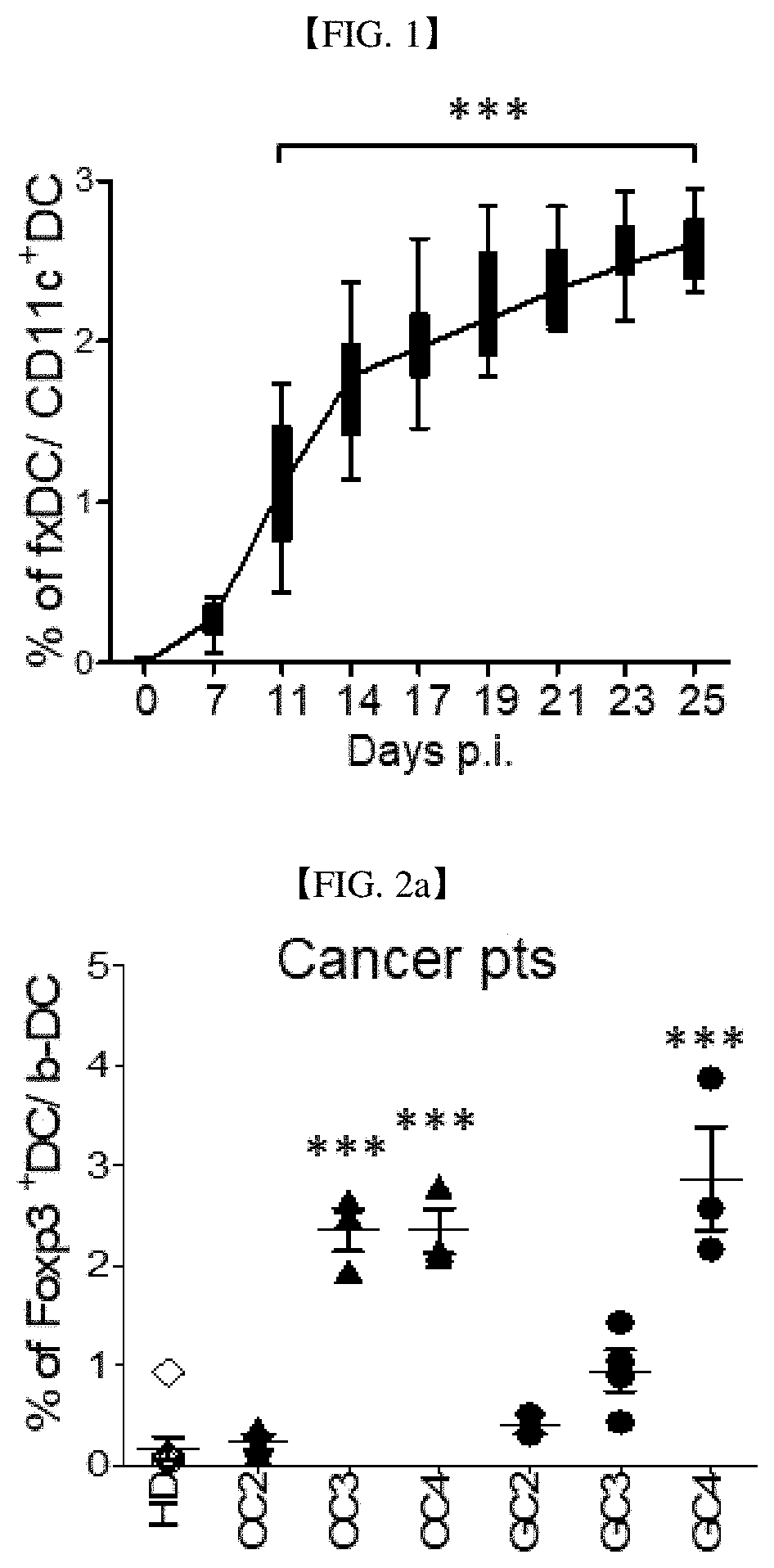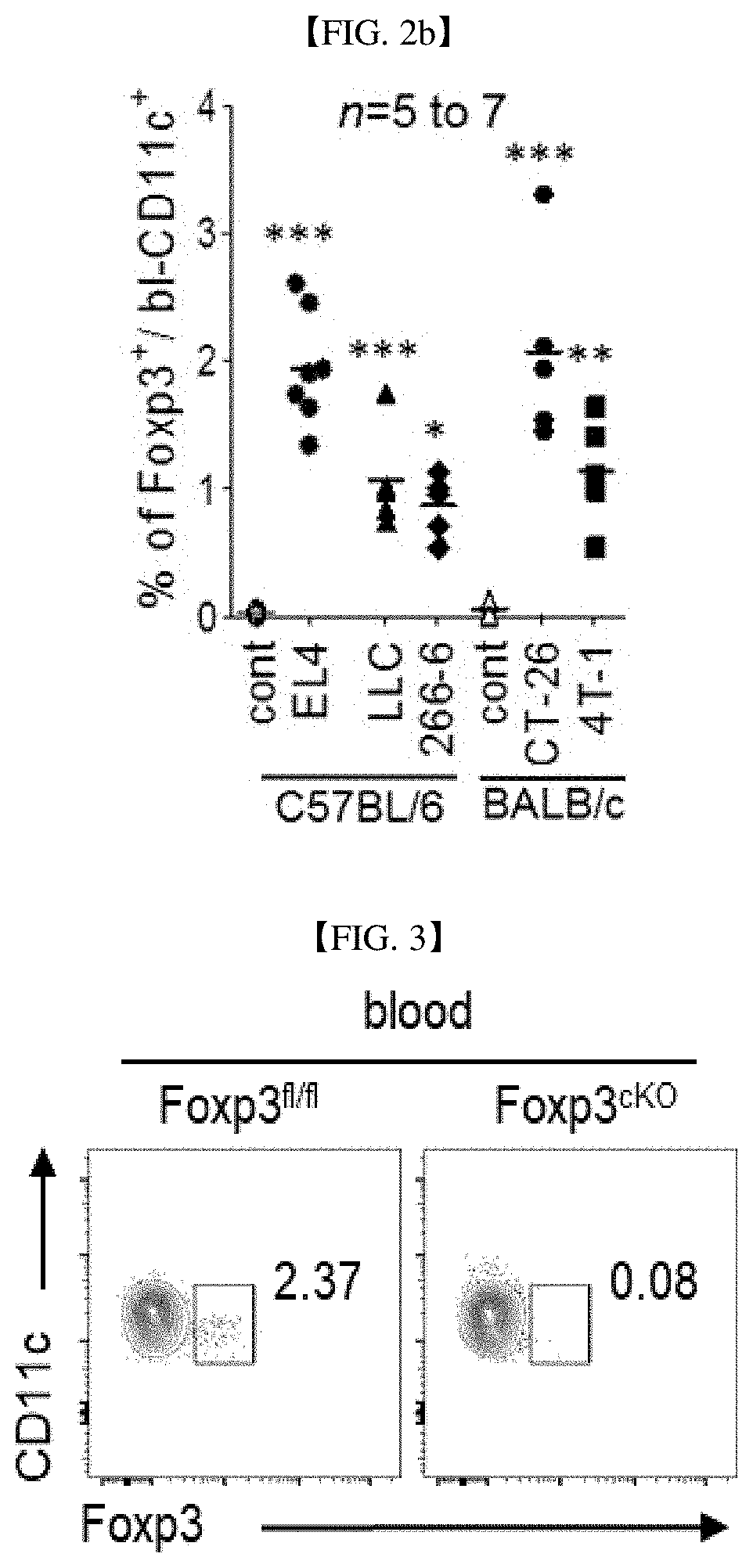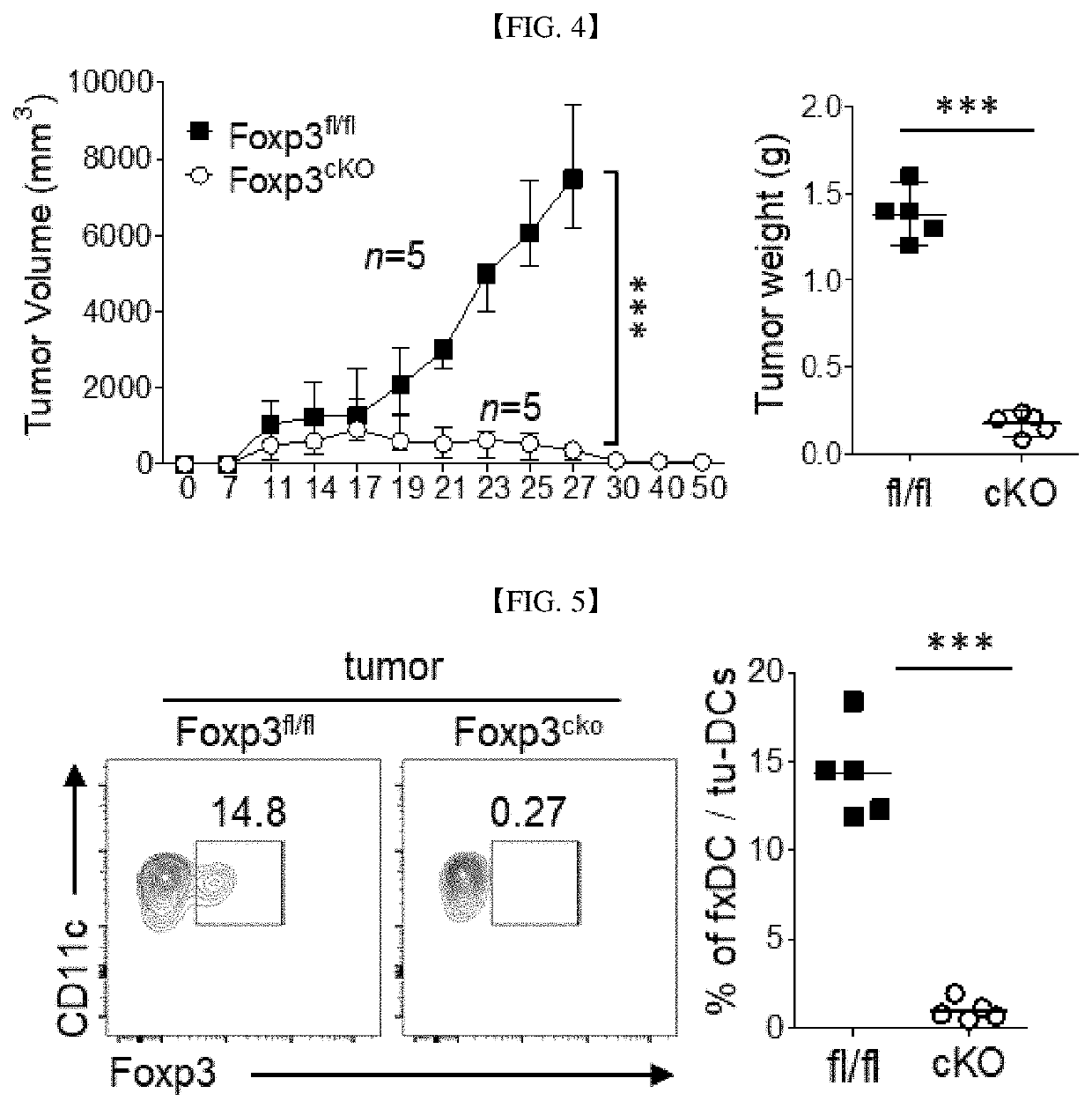Use of dendritic cells expressing foxp3 for diagnosis or treatment of cancer
- Summary
- Abstract
- Description
- Claims
- Application Information
AI Technical Summary
Benefits of technology
Problems solved by technology
Method used
Image
Examples
example 1
Measurement of Blood fxDC in Tumor Patients
[0093]In mouse tumor models constructed by injecting EL4 lymphoma into mice (see Reference Example 2), orbital blood (ocular blood) collection was performed every three days from day 7 after tumor cell transplantation, followed by measuring Foxp3-expressing dendritic cells (expressed as fxDC or Foxp3+ DC) in the blood (see Reference Examples 4 and 5). The results are depicted in FIG. 1. FIG. 1 shows results of monitoring fxDC populations in the blood of Foxp3GFP mice during tumor growth, wherein fxDC was estimated at each time point for blood collected from the ocular veins of the mice in each group (n=30 for three groups, 10 mice per group). As shown in FIG. 1, the percentage of fxDC in the blood of the tumor mouse models appears to increase with tumor growth.
[0094]In addition, measurement was made of fxDC in blood DC (b-DC) (see Reference Examples 4 and 5) from healthy donors (HD) and cancer patients (glioblastoma (GBM, stages 3 and 4), c...
example 2
Assay for Tumor Growth Inhibition by fxDC Inhibition
[0096]To investigate the effect of fxDC on tumor growth, first, DC-specific Foxp3-knockout mice (CD11c-Cre×Foxp3fl / fl: hereinafter referred to Foxp3cKO) were constructed (see Reference Example 1), followed by injecting tumor cells thereto to prepare tumor mice before measurement of blood fxDC (see Reference Examples 4 and 5). The results are depicted in FIG. 3. As can be seen in FIG. 3, fxDC was depleted from the blood of Foxp3cKO mice.
[0097]From seven days after injection of EL4 lymphoma tumor cells (5×105 cells) thereto, wild-type mice (Foxp3fl / fl; TB mouse in which Foxp3 had not been knocked out) and Foxp3cKO mice were monitored every three days for tumor growth. The results are depicted in FIG. 4. FIG. 4 shows plots of tumor volumes vs. times (left) and tumor weights on day 23 after tumor transplantation (right). As shown in FIG. 4, wild-type mice (Foxp3fl / fl) gradually increased in tumor size whereas tumors in the fxDC-deplete...
example 3
Assay for Increase of CD8+ T Cells and Cytotoxicity Against Tumor Cells by fxDC Inhibition
[0100]CD8+ T (Tc1) cells play a crucial role in anti-cancer immunity and directly induce the apoptosis of tumor cells (cytotoxic CD8+T-cell). CD8+ T cells in the tumor of fxDC-depleted Foxp3cKO mice amounted to about 35.6%, which was observed to be a great increase over the proportion (about 16.3%) of CD8+ T cells in wild-type mice (Foxp3fl / fl). Among CD8+ T cells in tumor tissues of fxDC-depleted Foxp3cKO mice, proportions of IFN-gamma-expressing CD8+ T cells (IFN-gamma+ CD8+ T cells; cytotoxic CD8+ T-cells) were measured, and the results are depicted in FIG. 7. As shown in FIG. 7, the proportion of the cytotoxic CD8+ T-cells in fxDC-depleted Foxp3cKO mice was 2.5 times as large as that in wild-type mice (Foxp3fl / fl). The results suggest the regulatory effect of fxDC on cytotoxic CD8+ T-cells (upregulation of cytotoxic CD8+ T-cell by fxDC depletion).
[0101]Investigation was made to see whether ...
PUM
 Login to View More
Login to View More Abstract
Description
Claims
Application Information
 Login to View More
Login to View More - R&D
- Intellectual Property
- Life Sciences
- Materials
- Tech Scout
- Unparalleled Data Quality
- Higher Quality Content
- 60% Fewer Hallucinations
Browse by: Latest US Patents, China's latest patents, Technical Efficacy Thesaurus, Application Domain, Technology Topic, Popular Technical Reports.
© 2025 PatSnap. All rights reserved.Legal|Privacy policy|Modern Slavery Act Transparency Statement|Sitemap|About US| Contact US: help@patsnap.com



